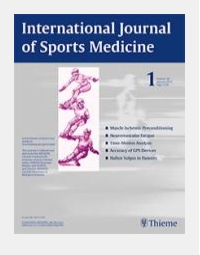Rampinini E1, Alberti G2, Fiorenza M3, Riggio M1, Sassi R5, Borges TO6, Coutts AJ7
1, Human Performance Laboratory, Mapei Sport Research Center, Olgiate Olona, Italy; 2, Department of Biomedical Sciences for Health, Università degli Studi di Milano, Milano, Italy; 3, Faculty of Exercise Sciences, Department of Sport, Università degli Studi di Milano, Nutrition and Health Sciences, Milan, Italy; 5, Training Check Juventus, Juventus Football Club, Turin, Italy;6, School of Leisure, Sport & Tourism, University of Technology, Sydney, Australia;7, School of Leisure, Sport & Tourism, University of Technology, Sydney, Lindfield, Australia

OBJECTIVES: To compare the metabolic power demands between positional groups, and examine temporal changes in these parameters during Australian Football match-play. DESIGN: Longitudinal observational study.METHODS: Global positioning system data were collected from 39 Australian Football players from the same club during 19 Australian Football League competition games over two seasons. A total of 342 complete match samples were obtained for analysis. Players were categorised into one of six positional groups: tall backs, mobile backs, midfielders, tall forwards, mobile forwards and rucks. Instantaneous raw velocity data obtained from the global positioning system units was exported to a customised spreadsheet which provided estimations of both speed-based (e.g. total and high-speed running distance) and derived metabolic power and energy expenditure variables (e.g. average metabolic power, high-power distance, total energy expenditure). RESULTS: There were significant differences between positional groups for both speed-based and metabolic power indices, with midfielders covering more total and high-speed distance, as well as greater average and overall energy expenditure compared to other positions (all p<0.001). There were reductions in total, high-speed, and high-power distance, as well as average metabolic power throughout the match (all p<0.001). CONCLUSIONS: Positional differences exist for both metabolic power and traditional running based variables. Generally, midfielders, followed by mobile forwards and mobile backs had greater activity profiles compared to other position groups. We observed that the reductions in most metabolic power variables during the course of the match are comparable to traditional running based metrics. This study demonstrates that metabolic power data may contribute to our understanding of the physical demands of Australian Football.
Int J Sports Med. 2015 Jan;36(1):49-53. PMID: 25254901 DOI: 10.1055/s-0034-1385866